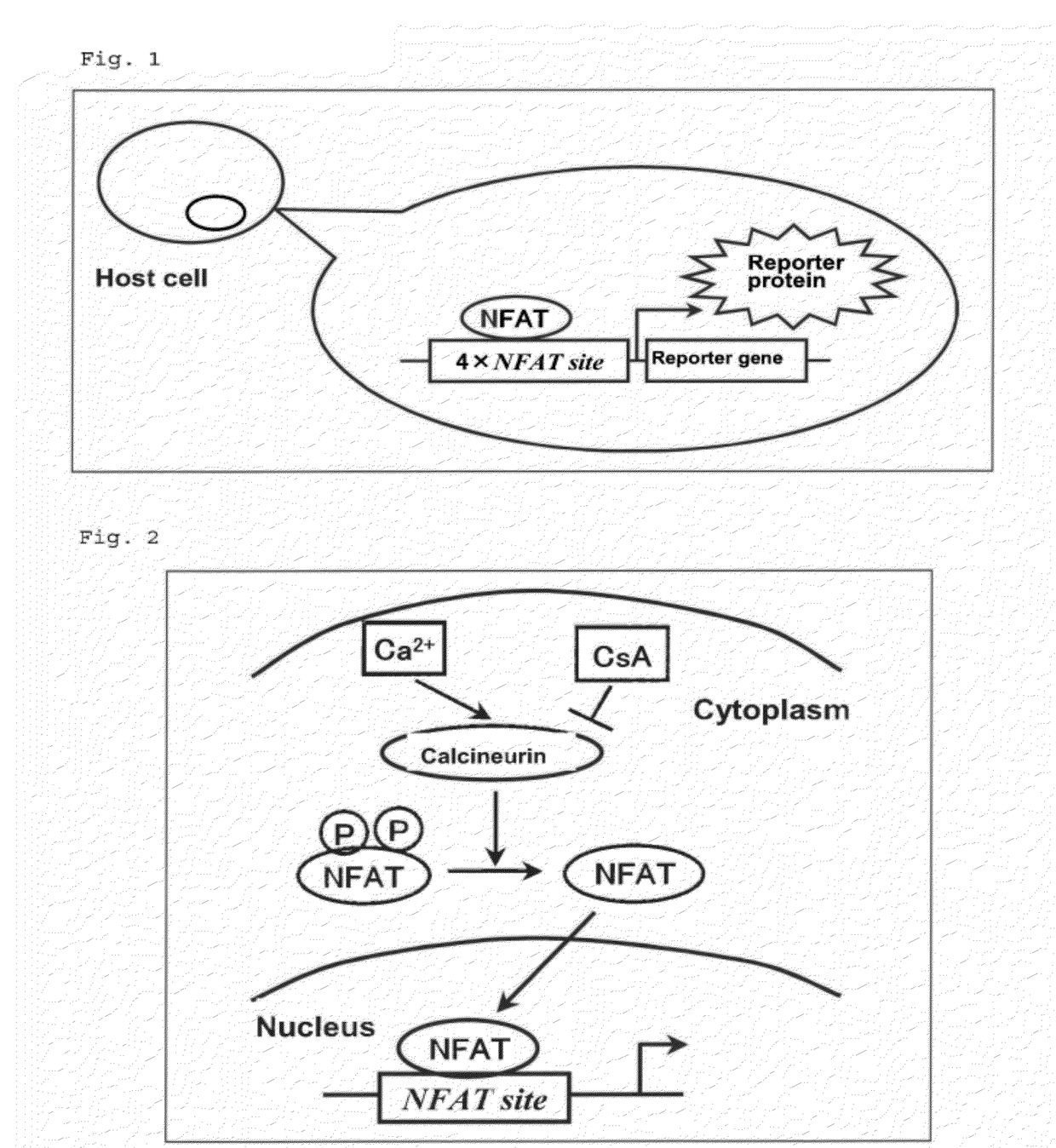NFAT signal inhibitor and calcineurin inhibitor
- Summary
- Abstract
- Description
- Claims
- Application Information
AI Technical Summary
Benefits of technology
Problems solved by technology
Method used
Image
Examples
example 1
Production of Plant Extract
[0070]In the present Example, an extract of American angelica was produced. Firstly, 95% ethanol (100 mL) was added to 10 g of American angelica root (produced in the U.S.A.), and the mixture was allowed to stand at room temperature for 7 days. Thereafter, the mixture was subjected to extraction, and the recovered liquid was filtered, to thereby yield 80 mL of an extract. The amount of evaporation reside was 0.7 w / v %.
example 2
NFAT Signal Inhibitory Effect
[0071]In the present Example, an evaluation system was established for detecting an NFAT signal inhibitory effect.
[0072]The NFAT signal inhibitory effect of the plant extract produced in Example 1 was detected by means of the evaluation system.
(1) Material and Method for Establishing the Evaluation System
Cell Culture
[0073]In this evaluation system, human kidney cells (HEK293) were purchased from ATCC (American Type Culture Collection) and used. The HEK293 cells were cultured in DMEM (high glucose, 10% heat-inactivated FBS) at 37° C. under 5% CO2 condition.
Plasmid and Transfection
[0074]In this evaluation system, HEK293 cells transfected with a plasmid having Photinus pyralis luciferase introduced into the downstream of the NFAT-binding sequence, pNFAT-Luc (Stratagene), were used. More specifically, the pNFAT-Luc (Stratagene), in which Photinus pyralis luciferase gene was introduced in the downstream of 4 copies of the NFAT-binding sequence, was transfecte...
example 3
Comparison of Percent NFAT Signal Inhibition Among Plants Belonging to the Genus Angelica
[0080]In the present Example, extracts were prepared from a variety of plants belonging to the genus Angelica, and NFAT signal inhibitory action was compared among them. The extracts were prepared as follows.
[0081]To 8 g of dry roots of American angelica (Angelica atropurpurea) (produced in the U.S.A.), 80 mL of 95 vol. % ethanol was added. The mixture was allowed to stand at room temperature for 7 days for extraction. The product was filtered, thereby yield an extract (evaporation residue: 1.0 wt. / vol. %).
[0082]To 8 g of dry roots of Touki (Angelica acutiloba) (produced in Japan), 80 mL of 95 vol. % ethanol was added. The mixture was allowed to stand at room temperature for 7 days for extraction. The product was filtered, thereby yield an extract (evaporation residue: 0.6 wt. / vol. %).
[0083]To 8 g of dry leaves of Ashitaba (Angelica keiskei) (produced in Japan), 80 mL of 95 vol. % ethanol was a...
PUM
 Login to View More
Login to View More Abstract
Description
Claims
Application Information
 Login to View More
Login to View More - R&D
- Intellectual Property
- Life Sciences
- Materials
- Tech Scout
- Unparalleled Data Quality
- Higher Quality Content
- 60% Fewer Hallucinations
Browse by: Latest US Patents, China's latest patents, Technical Efficacy Thesaurus, Application Domain, Technology Topic, Popular Technical Reports.
© 2025 PatSnap. All rights reserved.Legal|Privacy policy|Modern Slavery Act Transparency Statement|Sitemap|About US| Contact US: help@patsnap.com

